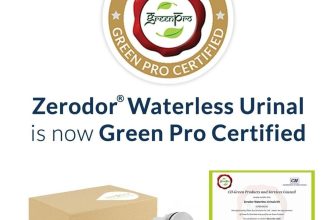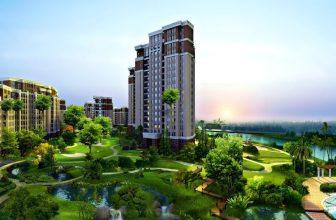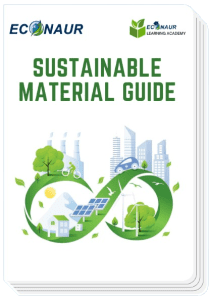Understanding the working & the need for Waste Water Management in India
Indian Cities do have Sewage Treatment Plants in India. In fact, After China, India is the only country that is working on water treatment activities very efficiently and effectively. We all know, that sewage water is the result of domestic activities, natural activities like rain, and industrial activities. Regular flow of infected water may increase the flow of sewage which needs to clean. As if the water flows up on the roads, it haphazard the regular commutation.
Usually, wastewater is thrown over the roads or may be stored in big tanks which may be recycled for further construction and agriculture work.
What is Waste Water? How is it generated?
Wastewater is the water that emerges after freshwater is used by human beings for domestic, commercial, and industrial use. This document will restrict itself only to the wastewater generated due to domestic use.
By and large,it is freshwater that is used for a variety of domestic uses such as washing, bathing & flushing toilets. Washing involves the washing of utensils used in cooking, washing vegetables and other food items, bathing, washing hands, and washing clothes.
The water that emerges after these uses contains, vegetable matter, oils used in cooking, oil in the hair, detergents, dirt from floors that have been washed, soap used in bathing along with oils/greases washed from the human body. This water is referred to as “ Grey Water” or sullage.
Water used to flush toilets to evacuate human excreta is called “ Black Water” or Sewage.
Grey water is easier to purify as compared to black water, i.e sewage. However, the practice predominantly followed in India is to combine these two wastes to discharge into a public sewer or into a sewage treatment plant in a residential community/ building that has no access to a public sewer.
What are the constituents of wastewater (sewage)?
Wastewater contains all the dissolved minerals present in the freshwater that was used and which became wastewater as well as all the other contaminants mentioned above. These are proteins, carbohydrates, oils & fats. These contaminants are degradable and use up oxygen in the degradation process.
Therefore, these are measured in terms of their demand for oxygen which can be established by certain tests in a laboratory. This is called Bio-Degradable Oxygen demand(BOD). Some chemicals which also contaminate the water during the process of domestic use also degrade and use oxygen and the test is done to establish this demand is called Chemical Oxygen demand (COD).
Typically domestic sewage would contain approximately 300 to 450 mg/liter of BOD and COD on average. Sewage also contains coliform bacteria (e coli) which is harmful to human beings if water containing such bacteria is consumed(drunk). E Coli is bacteria that thrives in the intestines of warm-blooded creatures such as humans, animals, and birds.
Another feature of sewage is the high level of Total Suspended Solids (TSS). This is what gives the sewage a black color, hence the name “ black water”. If sewage is allowed to turn septic, it then also has a strong, unpleasant odor.
What is the need for treating wastewater?
Much of the water used for domestic purposes does not require potable ( suitable for drinking) water quality. For instance, water used for flushing toilets or for washing floors, yards or roads & gardening does not require to be potable. In a scenario where fresh water is getting increasingly scarce and when enormous volumes of sewage generated in the country are not being treated but go unchecked to pollute fresh water from lakes, rivers, and the groundwater table, it must be treated.
Discharging untreated sewage into any drains other than an underground sewerage system, or into open land, is an offense and invites prosecution under the laws of all Pollution Control Boards in the country.
Sewage must necessarily be treated correctly and then re-used/recycled for various uses that do not need potable water quality. Recycling/re-using treated sewage can reduce fresh water requirements very substantially, by almost 50-60%.
In a scenario where fresh water availability itself is increasingly in doubt, this is critical.
How can treated sewage be reused/recycled?
This requires plumbing to be laid so as to serve two sets of storage tanks on the roofs of any residential/commercial building. One set of storage tanks will be used to receive and store fresh water which will flow through plumbing laid to take it to bathrooms and kitchens where it can be used for drinking, cooking, washing & bathing.
The second set of tanks will receive treated sewage which will be connected by plumbing to all the flush tanks in toilets and to other points where the water can be used for washing yards, floors, and also for gardening.
How is wastewater treated?
Sullage (grey water) which is mentioned above, if collected in a storage tank separately can be treated by aerating it to prevent it from turning septic, and then dosed with a coagulant, chlorinated, and then subjected to filtration by pressure sand filtration followed by activated carbon filtration and stored in a separate overhead tank or tanks from which it can be used for flushing toilets and other uses where fresh or potable water is not required.
However, the current practice is to combine sullage and sewage (black water) and treat the mixture in an STP (Sewage treatment plant). This practice has come in predominantly to reduce the cost of construction of two separate plants and because space is now at a premium in any building.
Why does not consider grey water treatment seriously in spite of the extra space it requires?
From the point of view of a resident, it is worth considering as it enhances the water security of the resident. A builder’s priority is totally different since the space taken up by the treatment system can not be ‘sold’ to a buyer, he will just not consider it, instead, the builder will combine greywater with sewage in an STP. This enables the builder to save costs.
However, if looked at from the residents’ viewpoint, a separate grey water treatment system being easier to operate provides a facility to ‘fall back on when the STP fails.
How can common problems in Water water treatment plants be avoided and/or resolved?
- Modern designs for STPs which are modular are available from reputed companies which are in the field of water and wastewater treatment. Such companies have standardized designs where, for instance, an STP to handle 150 KLD ( 150,000 Litres per day) of sewage can be made up of 3 modular STPs each of 50KLD capacity. Such an installation would be able to handle the initial lower load of sewage with one module in operation with the remaining modules being commissioned/started up as the sewage volume increases. Such a modular approach also makes it possible to handle sewage in the case of a breakdown of the STP as it is extremely rare for all modules to break down together. In short, there is a stand-by always available. For several years now a few companies have been offering microbial agents which can help overcome these problems if these microbial agents are added to the incoming sewage. Go in for Modular STPs & use microbial agents regularly.
- It is equally important to know and be able to control the volume of freshwater used in a community so that it does not exceed the design capacity of an STP. This involves installing water meters at all crucial points to measure water flow (consumption) & thereafter taking action to curb excess consumption of fresh water to prevent overloading the STP. Control excess consumption of fresh water and thereby prevent overloading of the STP
- Builders are not expected to be experts in water or sewage treatment plant design, manufacture, etc. They can however have tie-ups with reputed environmental engineering companies with sound technical experience and a proven track record, to make up for their lack of knowledge. This seldom happens since a builder’s interest ends with selling a completed project and then handing over the project to the Resident’s Association as soon as possible, often without even demonstrating the actual, successful operation of the water infrastructure. Most builders link up with small, obscure local companies with inadequate knowledge and expertise in waste and water treatment, but will put up something for an extremely low price. The result is poor/ wrong operation of an STP leading to untreated sewage and unpleasant odors from it. Ensure a supply of an STP from a reputed supplier and entrust operation & maintenance to a well-trained professional team.
- One of the major reasons for STPs not working properly is the fluctuations in input loads. The flow of sewage in a residential community is never uniform. It varies with peak flows in the morning (residents getting ready to go to work), very low or almost no flows later in the day with another peak in the evening. Raw sewage is collected in a sewage balancing tank(mentioned above) which should be sized to hold at least 6 to 8 hours of the flow of sewage. This ensures that the sewage collected in the balancing tank is homogenized, thereby avoiding input fluctuations in input load on the STP. Do not compromise on the size of a raw sewage balancing tank.
- High noise levels from an STP are due to the operation of electric motor-driven equipment such as pumps, air blowers, air compressors, etc. Old designs/makes of pumps, blowers, compressors, etc. are still available at very low prices in the market and these are used in most of the STPs that have been put up. The noise levels of such equipment are very high as compared to modern, world-class pumps and rotary motor-driven equipment now available in India. These modern makes are almost noiseless and extremely efficient. The old designs are also the cause of high energy consumption in addition to very high noise levels. As per the laws in force in India, the noise level permitted in a residential area is 55 dB (dB= decibels of sound) during the day time, i.e. from 6:00 am to 10:00 pm, and 45 dB during nighttime (10:00 pm to 6:00 am). As compared to these limits, the actual noise levels are likely to be as high as 75 dB or higher. To reduce noise levels and high energy consumption, it will be necessary to replace most of the critical rotary motor-driven equipment with the latest noiseless high-efficiency equipment. Here it is advisable to choose a reputed company with an established reputation in sewage/wastewater treatment to buy an STP. Such companies have constantly improved their designs to reduce the footprints (space occupied) of their equipment and reduction in the power consumption of power by a very appreciable amount. Unfortunately, residents have no say in this as they face up to this crucial fact when it is too late as the STP has been ordered probably even before the residents bought a home on the property.
Population growth and particularly the development of megacities are making SWM in India a major problem. The current situation is that India relies on inadequate waste infrastructure, the informal sector, and waste dumping. There are major issues associated with public participation in waste management and there is generally a lack of responsibility toward waste in the community. There is a need to cultivate community awareness and change the attitude of people towards waste, as this is fundamental to developing proper and sustainable waste management systems. Sustainable and economically viable waste management must ensure maximum resource extraction from waste, combined with safe disposal of residual waste through the development of engineered landfill and waste-to-energy facilities. India faces challenges related to waste policy, waste technology selection, and the availability of appropriately trained people in the waste management sector. Until these fundamental requirements are met, India will continue to suffer from poor waste management and the associated impacts on public health and the environment.
Tags: #greenbuilding#SustainabilityEco-friendly water solutionsEnvironmental engineeringGreen Building MaterialsGreen Buildings SolutionsGreywater treatmentIndia waste management challengesSewage managementSewage treatment plantSustainable developmentSustainable water practicesUnderstanding the working & the need for Waste Water Management in Indiawaste water management at homewaste water management for smart citieswaste water management modelwaste water management techniquesWastewater treatmentwater conservation in indiaWater pollution control








